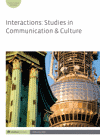
Full text loading...

The move from adolescence to adulthood is a pivotal transitional period rife with cultural, social and personal changes. It also involves an era of in-between moments: rather than a sudden change, teenagers spend years navigating the grey areas between adolescence and adulthood. This transition has been further complicated by the use of digital technologies (DTs) and computer-mediated communication (CMC) shaping teenagers’ experiences during this period. By utilizing UK communication regulator Ofcom’s Adults’ Media Lives dataset, this study longitudinally studies the same teenagers between 2006 and 2018. It observes how they are both aided and hindered by the use of DT and CMC over time, identifying three key aspects of their lives that are shaped during this transition – relationships with their parents, their friends and their move from school to work – as they strive for independence, agency and individuality.

Article metrics loading...

Full text loading...
References


Data & Media loading...

Publication Date:
https://doi.org/10.1386/iscc_00028_1 Published content will be available immediately after check-out or when it is released in case of a pre-order. Please make sure to be logged in to see all available purchase options.